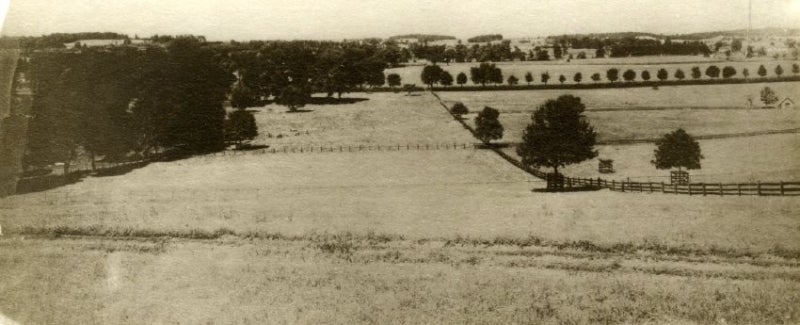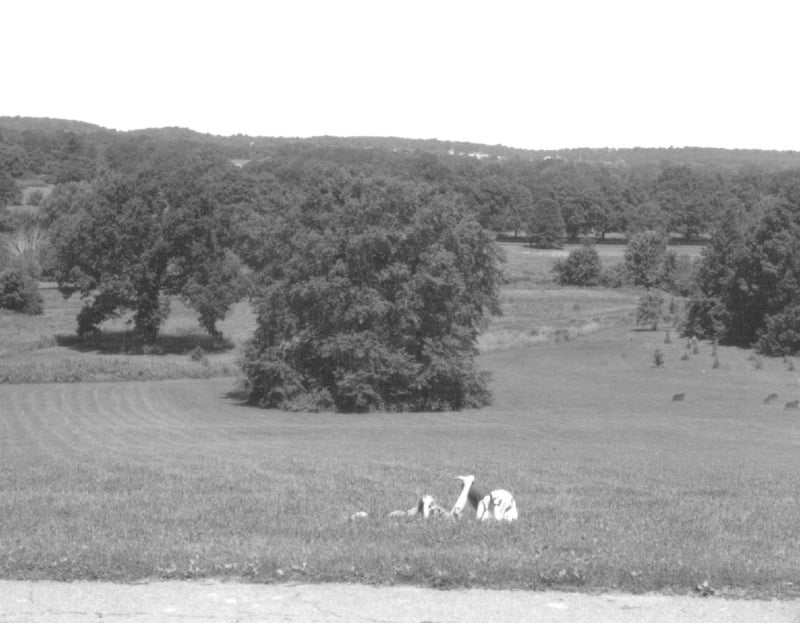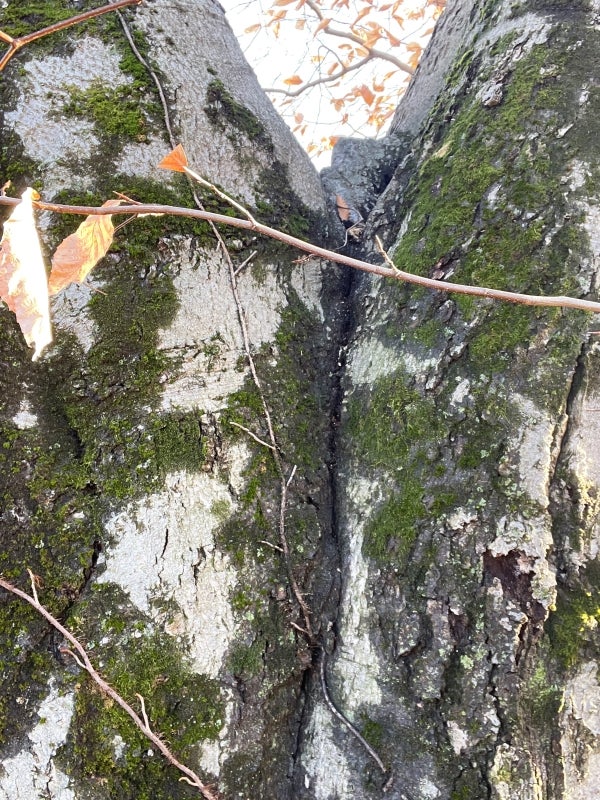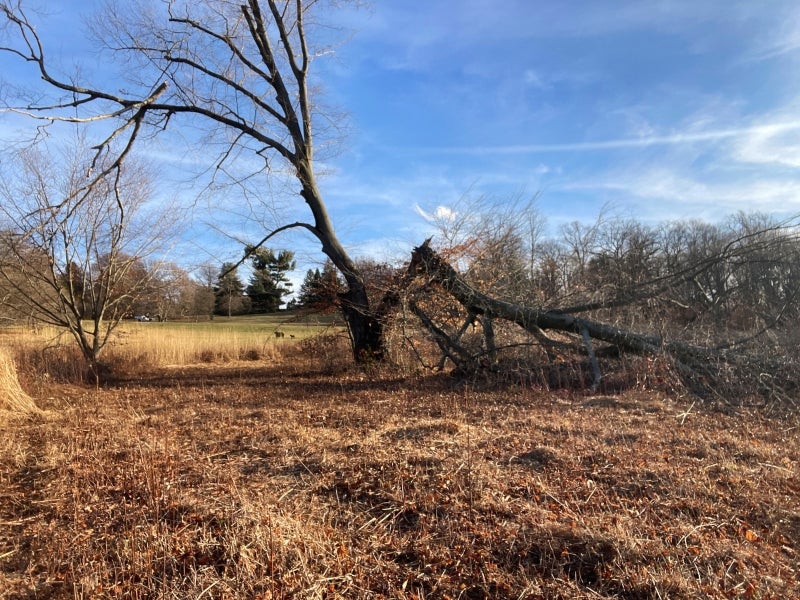Blog


The American beech tree (Fagus grandifolia) that stood proudly in the meadow next to the metal sheep along the entrance drive has a storied past. Long before the entry drive, the magnolia slope, and even before the Morris family purchased the land to create their Compton estate, the front slope was draped with pastures. In the middle of one of these pastures stood this beech, a “lone wolf” tree that offered a shady respite for grazing livestock. This tree was already a notable specimen in the 1909 survey, listed as F. ferruginea (a synonym for F. grandifolia).

We are a place of trees, and we deeply revere the many legacy trees in our collection. The lone wolf American beech on our front slope is one that we particularly cherish. In 1987, as the new entrance driveway was installed up the Magnolia Slope, special care was taken to give this tree a wide berth. This act of reverence allowed the tree to thrive, untouched by the encroaching construction. For decades, this beech welcomed visitors to the Morris Arboretum & Gardens with its iconic form: a single trunk with three main branches or leaders forming a rounded canopy. However, this unique structure led to future problems. As the multiple leaders grew and pressed together, they caused issues with compressed wood and trapped bark, creating fissures where they were joined. Essentially, these branches were choking each other out and becoming a breeding grounds for potential diseases.
In 1997, a large portion of one stem broke off during a violent summer thunderstorm. Given the dubious nature of this tree's structure, we realized this could mark the beginning of its decline. To preserve the beech, we layered the end of one limb. This ancient gardening technique involves pinning a limb to the ground and covering it with compost to encourage root growth, effectively creating a new plant while still attached to the parent tree.

In the early 2000s, the lone wolf beech began showing signs of trouble. Portions of the canopy appeared stressed, and small oozing wounds (cankers) were noticed on the lower trunk. Samples were collected, cultured, and found to be infected with Phytophthora, a chronic fungal disease that slowly weakens its host. Cultural treatments were implemented to mitigate the effects of this fungus. The beech was incorporated into a nearby small meadow to keep mowers and string-trimmers away, thus avoiding unnecessary bark wounding. Mulch was applied to reduce competition from other plants. The layered portion of the beech eventually began growing as a small tree on the northeast side of the canopy.
In July 2003, another severe summer thunderstorm caused the largest of the three main leaders to break out, taking nearly half of the tree canopy with it. The damage was cleaned up and some minor crown reduction was performed, but the beginning of this tree’s demise was set in motion. Predicting the exact timeframe for its failure was impossible and the lone wolf beech continued to grow on despite our expectations. In the summer of 2015, another storm caused extensive damage, leading us to perform end weight reductions on the major limbs to stabilize the canopy. Essentially, reducing the length and weight of tree limbs reduces their potential to fail.


In March 2019, a wet snow caused extensive crown damage, pulling out a 24-inch diameter limb and taking about 20 percent of the tree canopy. The remaining two leaders were reduced in an effort to forestall future damage. This reduction in leaf surface and the concomitant loss of vigor further weakened the tree.
Finally, on December 11, 2024, strong winds took out the second major leader and caused extensive damage to the remaining leader, thus sealing the fate of this beech. With the structure compromised and the risk it posed, the decision was made to remove the tree. However, thanks to our careful efforts taken decades earlier, the layered portion of the lone wolf beech is now a vibrant small tree growing 20 feet tall.
Rather than viewing the removal of this venerable old tree as a loss, we see it as an opportunity to create something new for the next generation. Some of the logs will be repurposed as pathway edging, and several pieces will be donated to local woodshops to be turned into objets d’art. Additionally, the new beech “pup” will carry on the legacy of the lone wolf beech, ensuring it continues to live on in a new form.